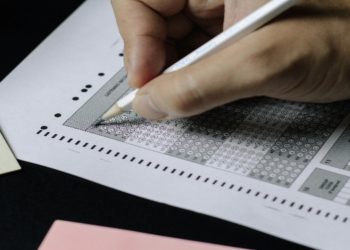Anybody who applies to study physics or physics and philosophy at Oxbridge must take the Physics Aptitude Test (PAT). This is a two-hour assessment test that evaluates a candidate’s ability in both physics and maths. Personally, for me, it was a very important part of the admission process as it is used to decide who is to be invited for the interview and take their admission process further.
How to Prepare for the PAT
Practice a Range of Past Papers
Before writing the PAT, I familiarized myself with the format of the questions. There is no better way to do this than through practicing PAT past papers. Practice tests simulate the real test and employ a similar or relative format. Get reports for each test. The reports should contain vital information such as the average mark on the paper, and the mark students need to ace their test.
I was practicing lots of PAT past papers, so I could stand a better chance of acing the aptitude test.
Practice Past Papers Under Timed Conditions
Time is of the essence in writing the PAT. One of the challenges that students who have written the PAT complain about is the number of questions they need to do in only two hours. This is among the factors that have caused students to fail the PAT.
From my experience, I recommend that during the practice of past papers, you should stick to a time limit per question. Operating within a time limit is key to attempting as many questions as possible and possibly getting to the end of the paper during exam day.
Solve the Most Difficult Questions
It is important to not practice only A-level physics and maths questions. During the PAT, questions that are beyond A level can be asked. If you write the exam unprepared for this, you are most likely to fail.
Practicing PAT past papers very helped me to get prepared for any kind of question to encounter.
Review Questions
One of the most important steps in preparing for the PAT is to review your answers on the past papers. This should be done whether the answers are correct or not. This is important to do because you can get a question right for the wrong reason.
This serves as a learning opportunity that will be beneficial on exam day as it can make substantial point differences. This is also a vital learning opportunity to figure out where the error occurred and not repeat them on the test day.
It is also to know why the answers are not correct. You can do this with the assistance of a professional PAT tutor.
What is the Format of the PAT?
The physics aptitude test is a two-hour exam written in two parts: mathematics for physics and physics aptitude test. Calculators or formula sheets are not allowed in the exam hall. The student is expected to know a range of basic laws, formulas, and mathematical values such as sines, cosines, and tangents of major angles.
The two papers written in the two parts of the exam are:
- Mathematics for physics- this includes elementary mathematics, algebra, and calculus.
- Physics aptitude test – this includes mathematics, problem-solving, waves and optics, mechanics, the natural world, and electricity and magnetism.
Full details of the syllabus can be found in the University of Oxford Department of Physics.
When Do You Register and Take the PAT?
Registration can be done through the exam officer at your school or college. If you are not a student you can register at an open center that will also administer your exam. Note that you can register for the PAT by yourself.
Registration for the PAT opens on the 1st of September and closes 15th of October at 5 p.m. The day for the PAT into Oxbridge is usually on the first number of every November.
What PAT Preparation Course is Best For Me?
Oxbridge’s physics courses are PAT past papers physics and maths tutor highly sought-after and competitive. You will get a head-start on your preparations by choosing a suitable PAT preparation program at Oxbridge Mind.
I personally turned to experts and a comprehensive syllabus to help me with PAT preparation courses tailored to my need.
What Does the PAT Cost?
There is a concomitant fee for the Oxbridge university entrance exams. However, there may be an administrative charge if you write the test at an open center. You should take care to find out if there is any fee payable and the amount.
FAQs
What is a good score in PAT?
It is generally agreed that a score of 60 and above is considered a good PAT score.
What causes a failed PAT test?
Not looking over a range of past papers, practicing problem-solving physics problems, and getting familiarized with the syllabus can cause a failed PAT exam.
Can I do the PAT test myself?
You cannot register for the PAT test yourself, but you can write the test yourself.
How many times can you take the PAT test?
The PAT can only be taken once in an academic year.
David Prior
David Prior is the editor of Today News, responsible for the overall editorial strategy. He is an NCTJ-qualified journalist with over 20 years’ experience, and is also editor of the award-winning hyperlocal news title Altrincham Today. His LinkedIn profile is here.












































































